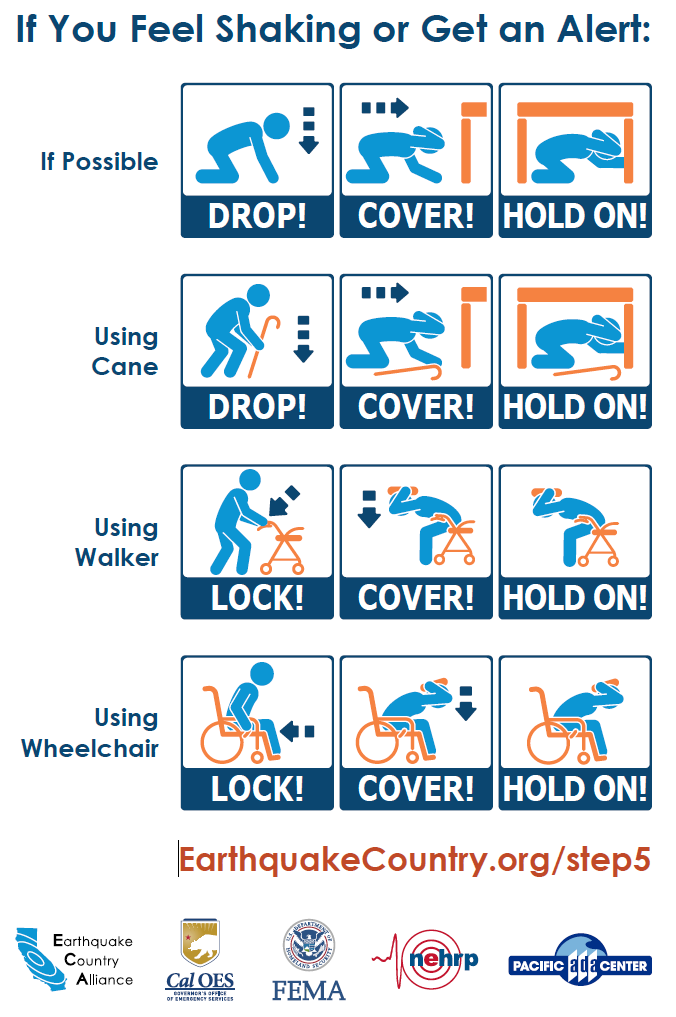Do you know what to do you if you feel the earth start to shake? What should you do after the shaking has stopped?
When an earthquake happens remember these three simple instructions:Drop, Cover and Hold on!

Below Are a Few Additional Tips to Keep You Safe
- Indoors
-
If you are indoors, stay there. Get under and hold onto a desk or table, or stand against an interior wall. Stay clear of exterior walls, glass, heavy furniture, fireplaces and appliances. The kitchen can be a particularly dangerous spot with glassware and other breakables that can create hazards. If you are in an office building, stay away from windows and outside walls and do not use the elevator. Check for fire or fire hazards. If you smell gas, shut off the main gas valve. If there's evidence of damage to electrical wiring, shut off the power at the control box.
- Outside
-
If you are outside, stay outside, and stay away from buildings utility wires, sinkholes, and fuel and gas lines.
The area near the exterior walls of a building is the most dangerous place to be. Windows, fireplace brickwork, facades and architectural details are often the first parts of the building to collapse. Also, shaking can be so strong that you will not be able to move far without falling down, and objects may fall or be thrown at you. Stay away from this danger zone--stay inside if you are inside and outside if you are outside.
Once you are in the open, get down low (to avoid being knocked down by strong shaking) and stay there until the shaking stops.
- Automobiles
-
If you are in a moving automobile, stop as quickly and safely as possible. Move your car to the shoulder or curb, away from utility poles, overhead wires, and under- or overpasses. Stay in the car and set the parking brake. Turn on the radio for emergency broadcast information. A car may jiggle violently on its springs, but it is a good place to stay until the shaking stops. If a power line falls on the car, stay inside until a trained person removes the wire.
While driving after an earthquake, watch for hazards such as breaks in the pavement, downed utility poles and wires, rising water levels, fallen overpasses and collapsed bridges.

